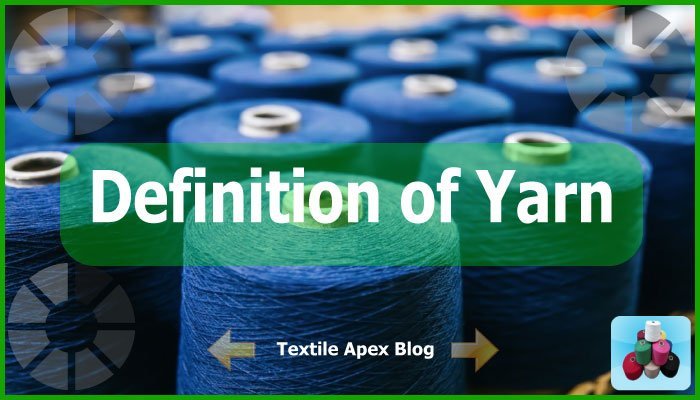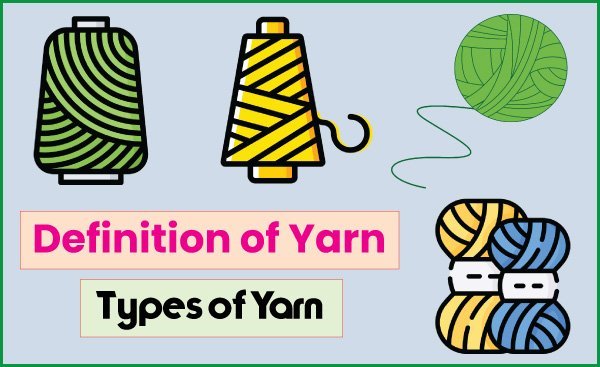Fancy Yarn: Different Structures and Formations [Images]
Last updated on November 3rd, 2025 at 09:42 pm
Fancy yarn is also termed novelty yarn made from metallic or synthetic fibre different from normal yarns. It enhances the aesthetic properties of clothing. Therefore, fancy yarn is always used to make fashionable items of clothing. It is also used to make curtains, carpets, etc. There are different structures and formations of fancy yarn. In this article, we will discuss it.
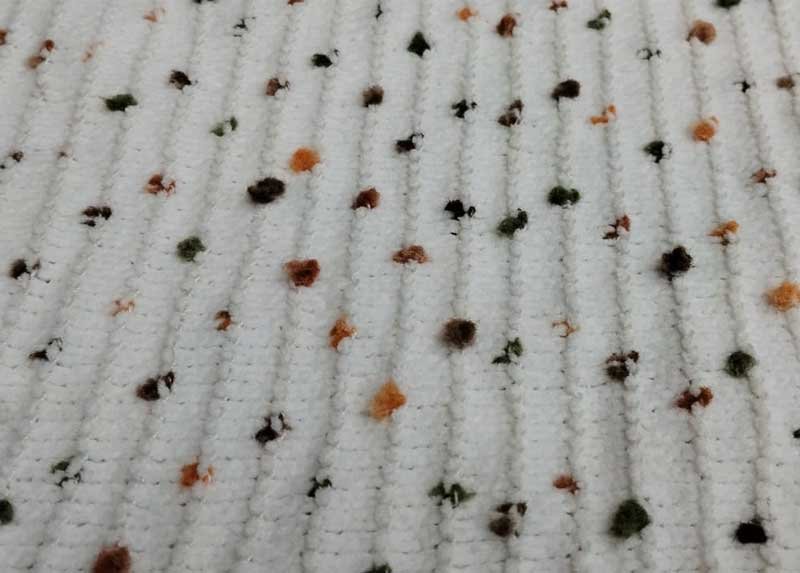
Structures and Formations of Fancy Yarn
Fancy yarns fall in to different categories, depending upon the basic morphology of yarns. They are shortly described below:
Marl Yarn
The simplest of fancy effects, a marl yarn is one in which two yarns of the same count and twist, but of different colors, are folded together to form a balanced yarn. They are, therefore, essentially plain folded yarns with the additional characteristics that the yarns folded together are of a different color or texture. As such, they barely count as “fancy yarns” at all, except in that they result in a suitable, but noticeable, modification to the appearance of finished fabric.

Spiral or Corkscrew Yarn
A spiral or corkscrew yarn is a plied yarn that displays a characteristic smooth spiraling of one component around other. Following figure shows the basic structure, which is straightforward, and except in the differing lengths of the two yarns involved, very similar to the structure of marl yarn. Indeed, just like marl yarn shown also in the following Figure, it can be produced relatively simply on a double frame or under the ring spinning system. It is more textural in appearance than marl, and the finer counts may also appear in some of the laces used in lingerie.
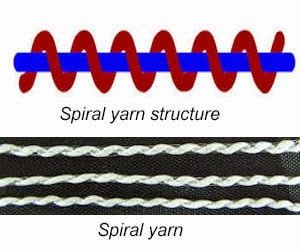
Gimp Yarn
A gimp is a compound yarn consisting of a twisted core with an effect yarn wrapped around it so as to produce wavy projections on its surface. This structure is shown in following figure. Since a binder is needed to ensure the stability of the structure, the yarn is produced in two stages. Two yarns of widely differing count are plied together, thick around him, and the reverse bond. Reverse binding removes most of the twist inserted during the first process. It is this removal of twist that creates the wavy profiles, since it makes the effect yarns longer than the actual length of the completed yarn.

Diamond Yarn
A diamond yarn is made by folding a thick single yarn or roving with a fine yarn or filament of contrasting color using S-twist, and cabling it with a similar fine yarn using Z-twist. Multi-fold or `cable` yarns may be produced by extending and varying this technique, to produce a wide range of effects. Clearly, a true diamond yarn would show some compression effect which in the interests of clarity has been omitted from the following figure.
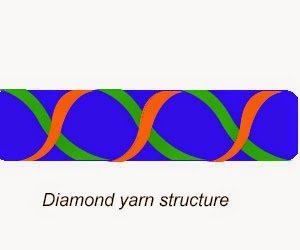
Eccentric Yarn
An eccentric yarn is an undulating gimp yarn, often produced by binding an irregular yarn, for example a strip, slub or knop yarn, in the direction opposite to the initial stage, creating graduated half-circular loops also along the compound yarn.
Boucle Yarn
The following figure shows the basic structure underlying a boucle yarn. This is a compound yarn comprising a twisted core with an effect yarn (or roving) combined with it so as to produce wavy projections on its surface. To simplify the diagram, the core has been shown as single bar, rather than as two yarns being intertwined with the effect yarn, as would be the case in reality.
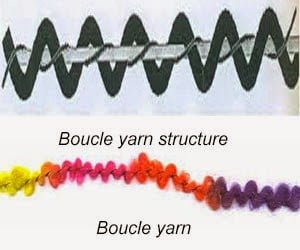
Boucle yarns belong to the gimp yarns and loop yarns. The effect is achieved by the differential delivery of the effect component wraps around the core yarns either tightly or loosely according to the amount of excess delivery and the level of the doubling twist inserted. These wraps are bound by the effect yarn. The effect is similar to a gimp.
Loop Yarn
A loop yarn consists of a core with an effect yarn wraooed around it and overfed so as to produce almost circular projection on its surface. The following figure shows the structure of a loop yarn, in this case somewhat simplified by showing the core as two yarns, is twisted, and partially entraps the effect.
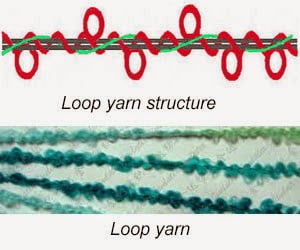
Snarl Yarn
Like the loop yarn, the snarl yarn is based around a twisted core, although, again for the sake of simplicity, the core has been shown in following figure as two parallel bars. A snarl yarn is one which displays ‘snarls’ or ‘twist’ projecting from the core. It is made by similar method to the loop yarn, but uses as the effect a lively, high twist yarn and somewhat greater degree of overfeed.
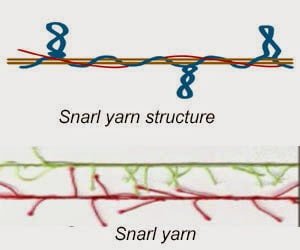
Mock Chenille Yarn
A mock chenille dose not at all resemble a true chenille yarn in its appearance as a yarn, but when it is woven into a fabric it will give an effect very similar to that of a chenille. It will, however, seem much harsher in handle because it does not involve cutting the loop of the effect yarns and so it lacks the ‘velvety’ fell.
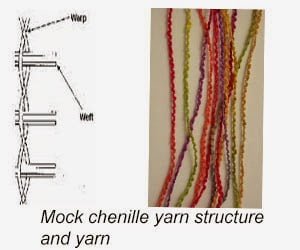
Knop Yarn
A knop yarn is one that contains prominent bunches of one or more of its component threads, arranged at regular or irregular intervals along its length, as shown in very simplified form in the following yarn.

It is usually made by using an apparatus that has two pairs of rollers, each capable of being operated independently. This makes it possible to deliver the foundation threads intermittently, while the knopping threads that create the effect are delivered continuously.
You may also like: What is Fancy Yarn | Properties and Uses of Fancy Yarn


